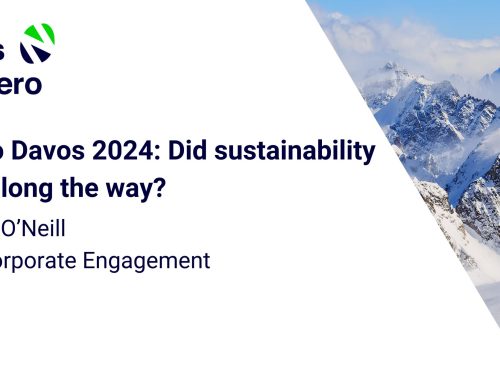On 24 May, Bankers for Net Zero’s CEO Heather Buchanan will be joining the ‘Transforming Capital to Drive the Low Carbon Transition‘ panel at Innovation Zero to discuss the critical challenge of unlocking the vast quantity of capital required to enable the transition to a zero-carbon economy.
We’ve laid out some of the steps Heather will cover that the sector can take to enable clean economic growth and job creation – and we look forward to seeing you at Innovation Zero!
~
Making finance a critical component for achieving the transition to a 1.5°C net-zero economy by mid-century is now the foremost objective for climate action. The 2015 Paris Agreement’s Article 2.i.c emphasized the target of aligning financial flows with a trajectory towards sustainable and resilient development with low greenhouse gas emissions.
Net Zero Road Map
Financial institutions should start by creating a net zero road map that is consistent with Government policies. Several financial institutions are legally obligated to assist in implementing Government policies, and this responsibility is expanding to include initiatives related to addressing climate change. The plan could consist of a step-by-step strategy which presents both long-term goals and immediate measures, and encompasses efforts to align the financial institutions’ internal operations and facilitate greater capital movement within the financial system. Notably, the plan must focus on achieving net zero in both energy systems and land use, thus integrating environmental action with the preservation of biodiversity.
Incorporate climate change into their monetary framework and portfolio
For financial institutions to adequately consider the effects of climate change on macroeconomic outcomes, they must incorporate climate change into their monetary frameworks and models in a consistent manner. Moreover, the monetary instruments and policy portfolios of financial institutions must be aligned with achieving net-zero targets to ensure operational effectiveness. A good example of this is the European Central Bank, which is already including climate risks in its collateral framework and asset purchases.
Understanding how to measure financed emissions
For financial institutions, one of the trickiest parts of the net zero puzzle will be their Scope 3 emissions. Scope 3, or financed emissions, relates to the GHG emissions produced along the corporate supply chain (e.g. suppliers and distributors) as well as emissions across their lending portfolio. This represents the most significant proportion of an organisation’s climate impact and is typically the most difficult to calculate, often involving a lot of estimations. As ESG-related regulatory pressure mounts, today is as simple as it is going to get for financial institutions in terms of Scope 3 emissions disclosure.
That is where Perseus comes in. Building on Open standards for data sharing, Perseus aims to enable assurable data to flow between SMEs, their financial institutions and their energy providers through new Trust Frameworks, ultimately automating the collection of emissions data across the value chain. This allows financial institutions, auditors and other stakeholders to validate, and ultimately replace, emissions estimates that are currently largely based on unverifiable, spend-based analysis. Armed with data that is comparable across customers and competitors, lenders can then demonstrate examples of sustainable investment without fear of greenwashing accusations or challenges.
The scale of the challenge is so urgent, and the world is changing so quickly, that the volume and complexity of new expectations and services is increasing every day for SMEs. Through building data collection from the bottom up, instead of the top-down approach we are seeing from other global reporting frameworks and regulations, Perseus offers the market solution that enables SMEs to engage in decarbonization quickly, whilst providing the transparency that the financial institutions require.



